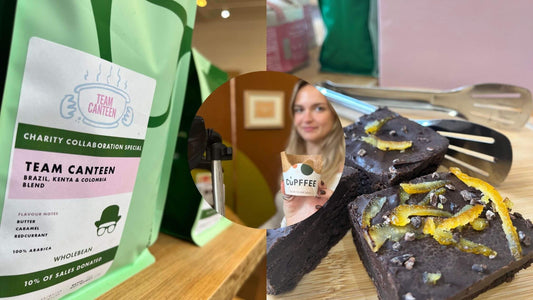Right now in our growing season, flavours are rich and full, reflecting the sumptuousness of long sunlit days, with wild strawberries, lush green leaves, and bright edible flowers, perfect for gathering and feasting.
July is a wonderfully abundant month for foraging free food - hedgerows are your best friend, and offer so much in the way of flowers and pickable grasses - but don’t be too hasty and forget the woodlands, too. Woods and forests are ideal places to start hunting for some of autumn’s early bounty: mushrooms. Keep reading to discover a delightful dinner and drink to make with your newly-foraged ingredients.
1. The Chanterelle. So let’s start with mushrooms then, and the undefeated Queen of the Forest, the Chanterelle. This delightful mushroom, one of the most iconic amongst foragers, can be found between July and December in the UK. Mainly to be found in mossy, low-lying, damp areas, they are usually in either coniferous or beech forests. Identifiable by their golden colour and funnel-shaped cap, and a gentle apricot scent, they have a sweet peppery flavour and delicate texture. You really can’t go wrong, unless of course you come across a false chanterelle, instead of the real deal. Make sure you take a comprehensive mushroom guide foraging with you, or attend a mushroom walk with an expert to help you stay safe.
2. The Wild Strawberry. Also known as Woodland Strawberries, are much dinkier than the fruit we’re used to, and much tastier, too. The plant is just coming to the end of its flowering season now, and can be found in woodlands and in hedgerows - even on the Bristol to Bath Railway path! You can be sure you’ve hit upon a wild strawberry by their small size and small white flowers - ideal for enjoying on their own, or to add to a number of cheesecakes, tarts and brownies.
3. Sorrel sorrel sorrel - how we love you! There are several varieties of sorrel, but wood sorrel is the tastiest. Wood sorrel can be identified by its low-lying, mid-green leaves, and is found mainly in woodland at the base of trees. Its dainty white flowers are ideal for helping you identify the plant, and the leaves have a distinctively sharp, citrusy taste, making it ideal for sauces and salads. A very pretty plant which is sure to make your salads sing this summer.
4. Gorse! Growing up on Dartmoor, I am all too familiar with the delightfully pointy gorse plant. Vase expanses of it cover much of the moorland, their spiky green bushes responsible for many a lost cricket ball. However, they do have one good element: the flowers are edible! I couldn’t believe it when I found this out, but the small golden-yellow flowers are a delicious and versatile ingredient. You can pickle them like capers, add them to salads, or turn them into a flavouring for spirits! The Riverford website has a lovely recipe to make a Gorse Flower Rum - delish!
Now, on to July recipes: two delightful uses for your finds - a quick chanterelle risotto, and a wild pink strawberry lemonade - what more could you want for a summer menu?
Chanterelle Risotto
Serves Two People
500g chanterelles (if you haven’t foraged enough, supplement with chestnut mushrooms)
1 white onion
2 garlic cloves
120g risotto rice
Butter (or vegan alternative)
Nutmeg
Salt + Pepper
Vegetable Stock (roughly 1L, although use your judgement)
Clean and wash your chanterelles well, before selecting a handful of the prettiest ones to keep aside for decoration. Chop the remainder into small pieces.
Slice your onions finely and add them to a large pan with a knob of butter. Sizzle gently until they turn transparent, before adding your sliced garlic and chopped chanterelles. Fry together until it smells fragrant, and then add your rice and coat in the butter.
Little by little, add stock and stir until it is absorbed, until the rice is cooked through and the texture is right (about 15 minutes) - taste it and see. Whilst the rice is cooking, gently fry off your remaining chanterelles in more butter.
Stir in a pinch of nutmeg, add salt and pepper to taste and decorate each serving with the fried mushrooms. Delish!
Pink Wild Strawberry Lemonade
You can adapt this recipe to the amount of strawberries you’ve managed to forage. If you don’t have very many, feel free to use the foraged ones as decoration, and replace the main bulk with conventional strawberries.
2 parts strawberries
1 part sugar
1 part water
1 lemon’s worth of zest
1 part lemon juice
Boil the water and sugar together in a pan until the sugar dissolves. Mix in the lemon zest and allow to cool.
Blitz the strawberries in a food processor, keeping a handful back to decorate.
Mix the sugar syrup with the strawberry puree, and add the lemon juice and cold water to taste.
Serve with ice and wild strawberries as decoration.
Looking for tableware inspiration to serve up your foraged delights?
Here's our 5 top picks for kitchenware to make your foraged finds sing!
1. The Village Pottery vase - in soft colours, perfect for summer
2. Florence Ceramics Grooved White Bowl - perfect for the risotto
3. Naked Clay Wildflower Vase - perfect for tiny floral finds




